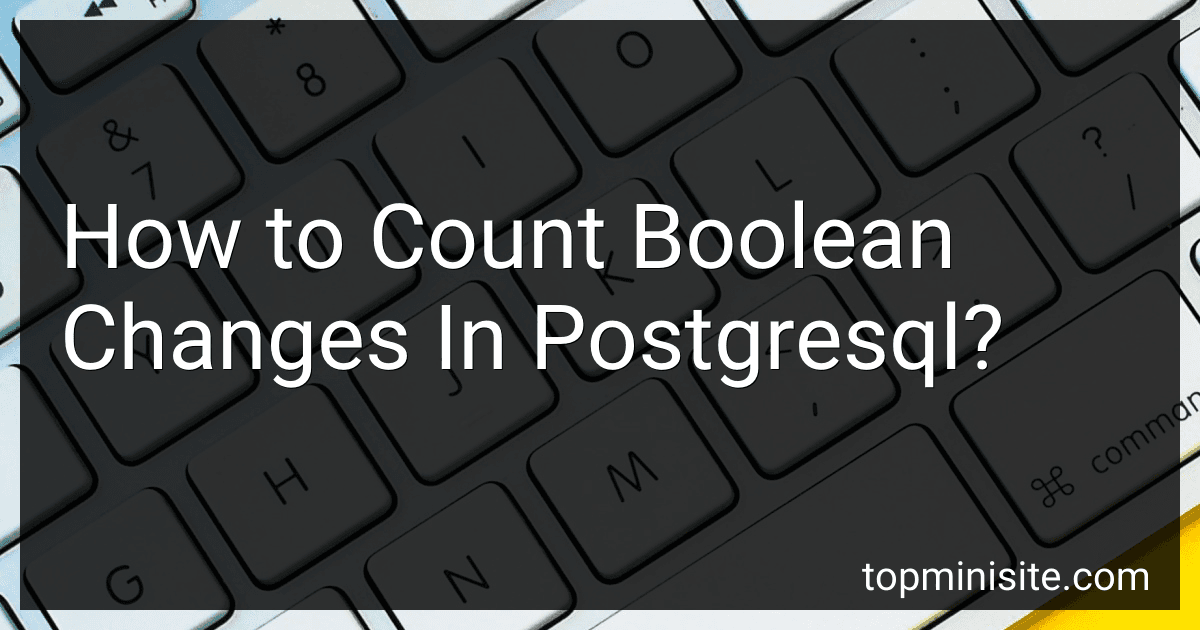Best SQL Tools to Buy in December 2025

Data Engineering with dbt: A practical guide to building a cloud-based, pragmatic, and dependable data platform with SQL


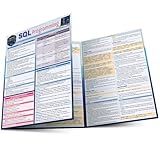
SQL Programming QuickStudy Laminated Reference Guide


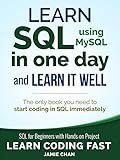
SQL: Learn SQL (using MySQL) in One Day and Learn It Well. SQL for Beginners with Hands-on Project. (Learn Coding Fast with Hands-On Project Book 5)



RPG & SQL: Style and productivity: Guide to coding style, practices and productivity tools for the IBM i platform



SQL Pocket Guide: A Guide to SQL Usage


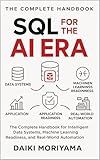
SQL for the AI Era: The Complete Handbook for Intelligent Data Systems, Machine Learning Readiness, and Real-World Automation


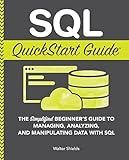
SQL QuickStart Guide: The Simplified Beginner's Guide to Managing, Analyzing, and Manipulating Data With SQL (Coding & Programming - QuickStart Guides)


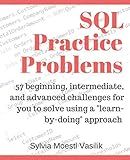
SQL Practice Problems: 57 beginning, intermediate, and advanced challenges for you to solve using a “learn-by-doing” approach


In PostgreSQL, one way to count boolean changes is to use a window function along with the lag() function. You can create a query that selects the boolean value you want to track and then use the lag() function to compare it with the previous row's value. By checking for changes in the boolean value, you can increment a counter whenever there is a change from true to false or vice versa. This allows you to keep track of the number of boolean changes in your dataset.
How can I monitor boolean changes in a PostgreSQL database?
You can monitor boolean changes in a PostgreSQL database using triggers. Triggers are special functions that are automatically executed when certain events occur on a table, such as an INSERT, UPDATE, or DELETE operation.
To monitor boolean changes, you can create a trigger on the table that contains the boolean column you want to monitor. The trigger function can then check if the boolean column has been changed and log the change to a separate table or perform any other desired action.
Here is an example of how you can create a trigger to monitor boolean changes in a PostgreSQL database:
- Create a table to log the boolean changes:
CREATE TABLE boolean_changes ( id SERIAL PRIMARY KEY, table_name text, column_name text, old_value boolean, new_value boolean, change_date timestamp );
- Create a trigger function to monitor the boolean changes:
CREATE OR REPLACE FUNCTION monitor_boolean_changes() RETURNS TRIGGER AS $$ BEGIN IF OLD.boolean_column != NEW.boolean_column THEN INSERT INTO boolean_changes (table_name, column_name, old_value, new_value, change_date) VALUES (TG_TABLE_NAME, 'boolean_column', OLD.boolean_column, NEW.boolean_column, now()); END IF;
RETURN NEW;
END; $$ LANGUAGE plpgsql;
- Create a trigger on the table to call the trigger function:
CREATE TRIGGER boolean_change_trigger AFTER UPDATE OF boolean_column ON your_table FOR EACH ROW EXECUTE FUNCTION monitor_boolean_changes();
Replace boolean_column with the name of the boolean column you want to monitor and your_table with the name of the table containing the boolean column.
With this trigger in place, any changes made to the boolean column will be logged in the boolean_changes table, allowing you to monitor boolean changes in your PostgreSQL database.
What are the common mistakes to avoid when tracking boolean changes in PostgreSQL?
- Not using a proper data type: One common mistake is not using the correct data type to track boolean changes. Make sure to use the boolean data type when creating columns to track boolean changes.
- Not using meaningful column names: Another mistake is using generic column names like "status" or "flag" without any further context. It's important to use meaningful and descriptive column names that clearly indicate what the boolean value represents.
- Not setting default values: It's important to set default values for boolean columns to ensure consistency and avoid null values.
- Not using constraints: Make sure to use constraints like NOT NULL or CHECK constraints to enforce data integrity and prevent invalid boolean values from being inserted.
- Not normalizing the data properly: Avoid storing boolean values redundantly in multiple tables or columns. Normalize the data properly to avoid duplication and ensure data consistency.
- Not handling boolean changes efficiently: If there are frequent boolean changes, consider using triggers or stored procedures to handle the updates efficiently and maintain data integrity.
How to scale boolean change counting for a growing PostgreSQL database?
As your PostgreSQL database grows, you may find that counting boolean changes becomes increasingly resource-intensive. Here are a few strategies to help you scale this process as your database expands:
- Indexing: Ensure that you have created appropriate indexes on the columns that record boolean changes. This will help improve the performance of the queries used to count these changes.
- Partitioning: Consider partitioning your tables based on the columns that record boolean changes. This can help distribute the workload across multiple physical storage structures, improving performance.
- Continuously evaluate and optimize queries: Regularly review your queries for counting boolean changes and look for opportunities to optimize them. Make sure you are using the most efficient query plans and indexes.
- Implement caching: Utilize caching mechanisms to store the results of previous queries for counting boolean changes. This can help reduce the overhead of repeatedly counting changes in large tables.
- Consider using materialized views: If you frequently need to count boolean changes, consider creating materialized views to precompute and store the counts. This can help improve query performance, especially for commonly run queries.
- Use asynchronous processing: If real-time counting of boolean changes is not necessary, consider offloading this task to an asynchronous process. This can help reduce the impact on the primary database and improve overall performance.
By implementing these strategies, you can scale boolean change counting for a growing PostgreSQL database and improve the performance of your application as it expands.
What are the limitations of counting boolean changes in PostgreSQL?
There are several limitations to consider when counting boolean changes in PostgreSQL:
- Limited tracking: PostgreSQL does not have built-in support for tracking changes to boolean values, so you may need to manually implement a mechanism to track and count changes.
- Limited granularity: Counting boolean changes may not provide enough granularity for more specific analysis or reporting. For example, you may want to track when a boolean value changes from true to false versus false to true.
- Performance impact: Implementing a mechanism to track boolean changes and count them can impact performance, especially in large databases with high frequency of updates.
- Data integrity: The manual tracking of boolean changes could potentially introduce errors or inconsistencies in the data if not implemented correctly.
- Scalability: As the size of the database and frequency of updates increases, the process of tracking and counting boolean changes may become more complex and resource-intensive. This could potentially impact the scalability of the system.
